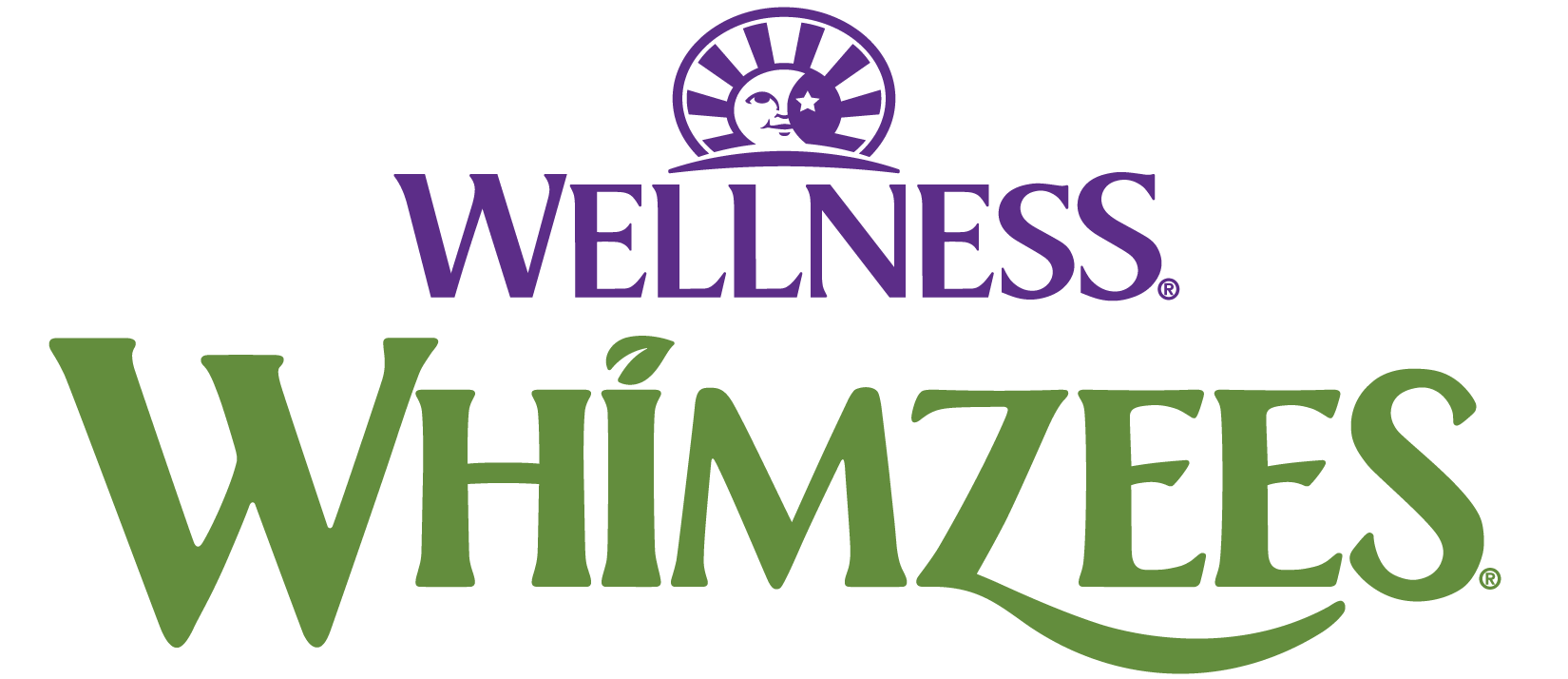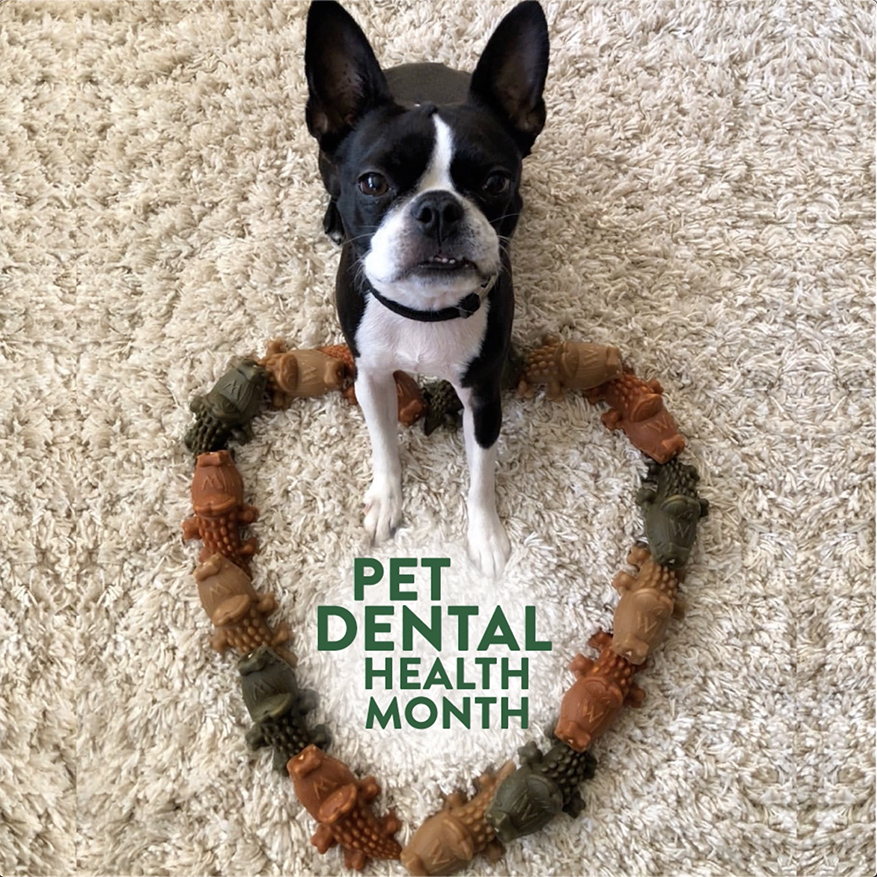Pet dental health is one of the most controllable yet impacting aspects of pet health care. It’s impacting because pet dental issues can not only lead to costly surgeries but also to heart disease, diabetes, and organ malfunction. Thankfully, with attentive dental hygiene and care, many of these issues can be prevented. Celebrate Pet Dental Health Month this February by starting a fun, healthy dental health care regimen with your pet.
1. Brush Your Pet’s Teeth
According to the American Veterinary Medical Association (AVMA), teeth brushing is the primary means of preventing pet dental health issues. Of course, while the AVMA recommends building up to a daily brushing regimen, they recognize that’s not always realistic or feasible for most pet owners. they suggest brushing at least three times a week, though.
If you are new to the idea of brushing your pet’s teeth…don’t worry; you’re not alone. A very low percentage of pet owners brush their pet’s teeth. The basics of how to brush your pet’s teeth are:
- Set up in a comfortable, quiet place when your pet is calm.
- Kneel on the floor near your pet.
- Practice massaging their gums to acclimate them to the sensation of having their gums and teeth touched.
- Once they’re used to having their gums touched, test out new pet toothpastes (only ever use a toothpaste made for pets) by putting it on your finger and rubbing it on their gums.
- Next, introduce them to the toothbrush. For small pets, you can use a finger brush; for larger pets, they make toothbrushes specially angled for your pet’s mouth.
- Build up the amount of time you brush each day slowly.
It may take several days to weeks to get your pet comfortable with teeth brushing. It’s recommended to always attempt to brush your pet’s teeth at the same time and in the same location each day. With February being Pet Dental Health Month, now is a great time to implement a tooth brushing regimen or to learn to brush your pet’s teeth if you aren’t already.
2. Supplement Cleaning Your Pet’s Teeth with a Dental Chew
Between brushings and certainly on days that you don’t brush, veterinarians recommend that you supplement your pet’s oral health care with a daily dental chew. Dental chews are great because pets enjoy them as if they are treats, but they are specially created to help fight unsavory plaque and tartar, which if left unattended can lead to periodontal disease.
When buying a dental chew, look for one that has natural ingredients consistent with your pet’s already-healthy diet. Also, find a dental chew that is certified by a veterinary vetting agency, so you know that the chew is doing what it needs to do to protect your pet’s teeth, gums, and quality of life.
3. Have Your Pet’s Teeth Regularly Cleaned
In addition to brushing and supplementing with daily dental chews, pet owners should also find time to take their pet in for a professional cleaning job at least once or twice per year. Your veterinarian can perform this service as can other pet professionals. If you have an older pet, you may want to opt for biannual cleanings as older pets are more likely to suffer from periodontal disease, which can often lead to the need for surgical extraction.
You and your pet will smile brighter and whiter after a professional cleaning because you’ll know you’re doing your part in keeping your pet’s mouth clean and healthy.
4. Get Your Pet’s Teeth Checked and Treated
Another way to celebrate pet dental health month is to get your pet’s teeth checked during their regular family veterinary visits. Your veterinarian can perform services such as adjustments, fillings, extractions, and repair. Considering the AVMA reports that 70-80% of pets have issues by age three, you can never be too prompt in getting dental health care for your pet. Even if you pet does not need immediate care, your veterinarian can monitor your pet for changes in their dental health and can spot issues that lie beneath the surface.
After all, many pet dental issues are not visible to the naked or to the untrained eye until they have become so problematic that they are causing your pet pain or health problems. Signs that your pet has a dental problem include:
- Excess drooling, dropping food while eating, or chewing issues
- Bad breath
- Pain when the mouth is touched
- Facial swelling or swelling around the mouth or gums
- Reduced appetite or weight loss
- Yellowing or browning teeth
- Broken or loose teeth
- Bleeding gums
If you observe any of these signs between your regular veterinary wellness checks, get your pet evaluated immediately. The sooner you catch and issue, the better your treatment options are.
5. Spread the Word about Pet Dental Health Month
Lastly, celebrate pet dental health month by posting a toothy selfie to your Instagram account or create a fun TikTok video with you and your pet. Use the hashtag #petdentalhealthmonth or #petdentalhealth to help spread the word about Pet Dental Health Month, about how you’re taking extra great care of your pet’s teeth and gums, about what your pet’s favorite dental chew or pet toothpaste is, and about what you know about spotting pet dental issues (now that you’re an expert).
There are so many ways to celebrate Pet Dental Health Month, but the best ways are by making sure your pet has a healthy smile and that your pet’s healthy smile stays that way (okay, and you share a picture, so everyone you know can celebrate with you).
Pet Dental Health Month is one of our favorites at WHIMZEES®. Why? Because we create a delicious, natural, six ingredient dental chew that makes celebrating your pet’s dental care fun and easy. We just can’t get enough of those happy, healthy pet smiles.



